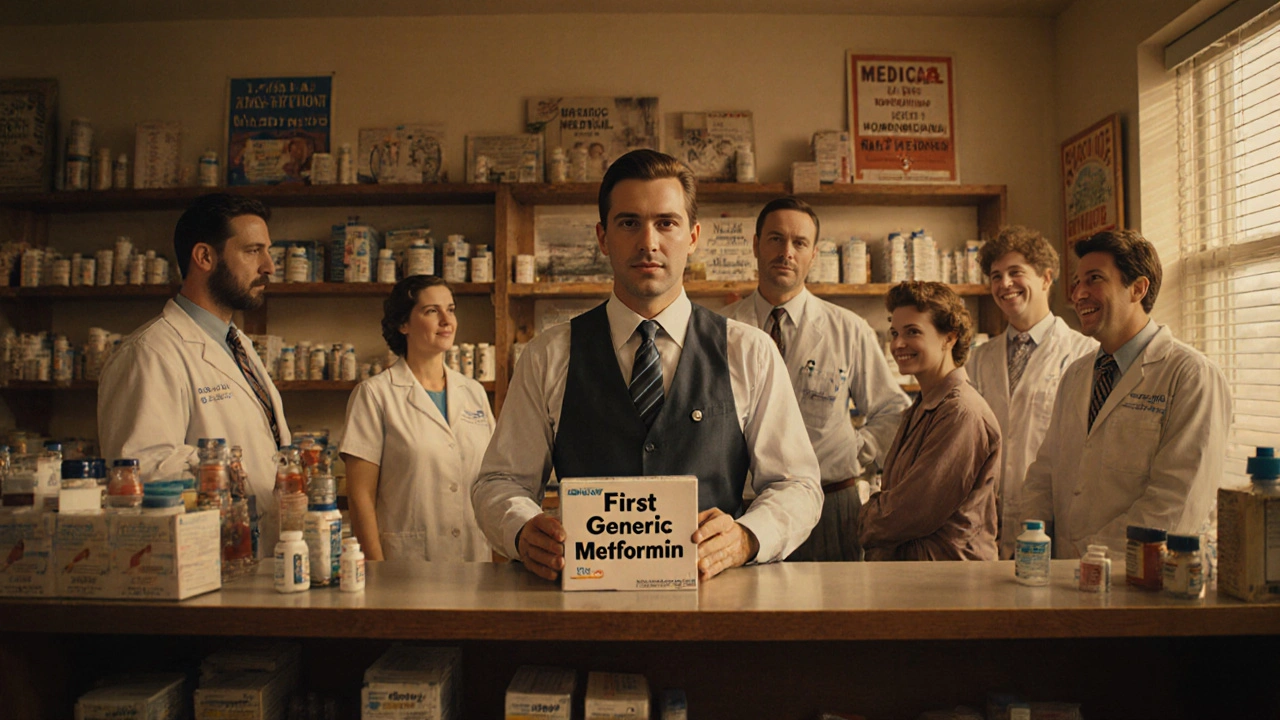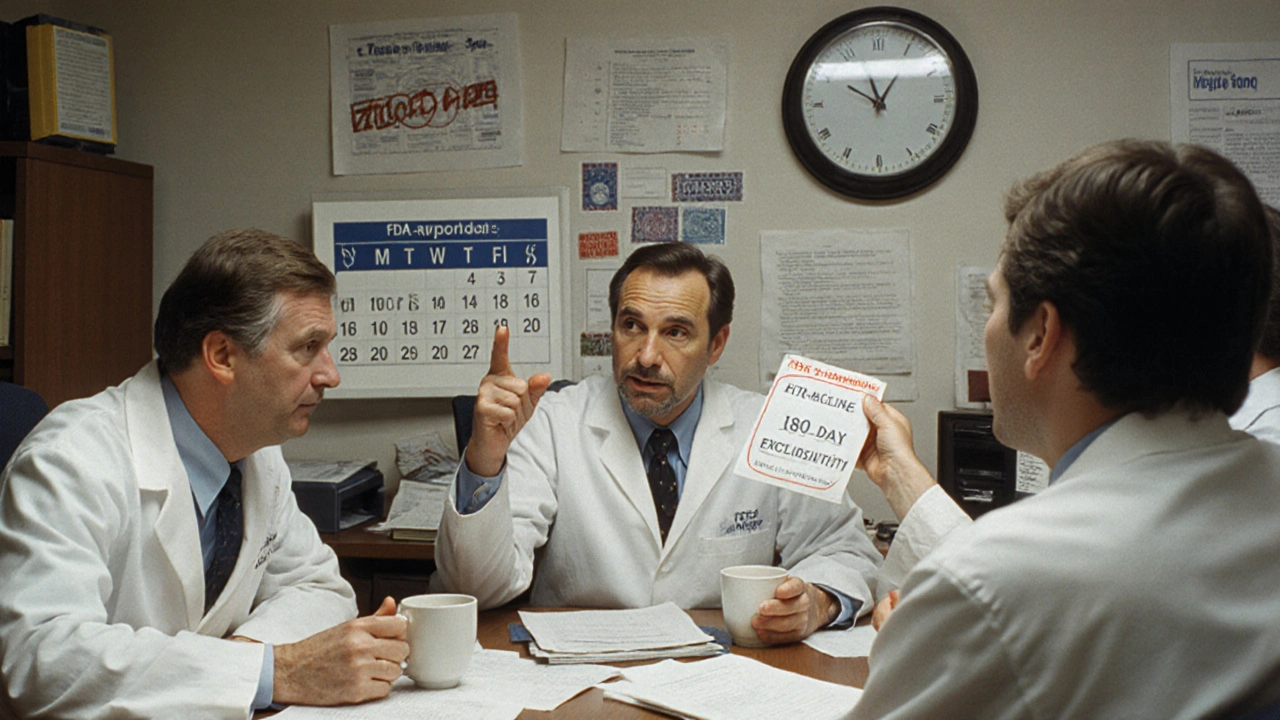First-Mover Advantage: How First Generic Drug Makers Dominate the Market

When a brand-name drug loses its patent, the race to be the first generic version on the market isn’t just about speed-it’s about locking in nearly all the business before anyone else gets a chance. The first company to launch a generic version of a popular drug doesn’t just get a head start. It often walks away with 70% to 80% of the entire generic market during its 180-day exclusivity window. And even after that window closes, that lead doesn’t vanish. It sticks. Why? Because in healthcare, switching isn’t simple. Doctors don’t change prescriptions easily. Pharmacies don’t stock multiple versions of the same pill unless they have to. Patients don’t ask for a different brand unless they’re told to.
How the Rules Were Set: The Hatch-Waxman Act
The whole system was built on a law passed in 1984 called the Hatch-Waxman Act. Before that, generic drugs were slow to enter the market. Brand companies held patents for years, and generic makers had to prove their drugs were safe and effective from scratch-something that took years and cost millions. Hatch-Waxman changed that. It let generic companies file for approval using the brand drug’s existing safety data, as long as they could prove their version was bioequivalent. In return, they had to challenge the patent or wait until it expired. But the real game-changer? The 180-day exclusivity period. If you’re the first to file a patent challenge and win, you get a legal shield. No other generic can enter for six months. That’s not just a delay-it’s a monopoly. And during those 180 days, the first generic can charge nearly the same price as the brand. That’s when the real money is made.Why the Lead Lasts Long After Exclusivity Ends
Most people think the advantage ends when the 180 days are up. It doesn’t. The real power comes from what happens next. Pharmacies don’t want to stock five different versions of metformin. They pick one. Usually, it’s the first one that came in. Why? Because switching means retraining staff, updating systems, and dealing with insurance paperwork. It’s easier to stick with what’s already working. Doctors do the same. Once they’ve written a prescription for a generic made by Company A, they keep writing it. Even if Company B’s version is 20% cheaper, the doctor won’t change unless the patient asks or the pharmacy forces it. And most patients don’t know-or care-which generic they’re getting, as long as it works. Data from DrugPatentWatch shows that first-movers often hold onto 50% to 60% of the market even after a second generic enters. After five or six generics join the race, the first mover still holds 30% to 40%. That’s not luck. That’s system inertia.Where the Advantage Is Strongest
Not all drugs are created equal when it comes to first-mover power. Injectables? Huge advantage. If you’re the first to make a generic version of a complex injectable like epinephrine auto-injectors or chemotherapy drugs, you can capture up to 90% of the market. Why? These drugs require specialized manufacturing. Few companies can make them. Fewer still can get FDA approval fast. That limits competition. Oral pills? Less so. For common drugs like lisinopril or atorvastatin, dozens of companies can make them. The advantage shrinks. But even here, the first mover still wins-just not as badly. Specialty drugs? Even bigger edge. Drugs for rare conditions, like those used for autoimmune diseases or cancer, have small patient pools and fewer prescribers. That means each prescription matters more. If you’re the first to enter, you own those doctors. And you own those patients. Later entrants might get 10% of the market, tops.
Who Wins and Who Gets Left Behind
It’s not just about being first. It’s about who you are. Large pharmaceutical companies with existing generic divisions-like Teva, Mylan, or Sandoz-dominate first-mover wins. They have the regulatory teams, the manufacturing capacity, the legal departments to handle patent challenges, and the cash to wait out the 18- to 36-month approval process. McKinsey found that when a big pharma company is first, they gain over 10 market-share points more than smaller players. Smaller companies? They often struggle. Even if they file first, they might not have the supply chain to keep up. Or they lack experience in that therapeutic area. Studies show that companies without prior experience in a drug class get only half the advantage of those who’ve done it before. Domestic manufacturers also have an edge. A 2023 NIH study found U.S.-based generic makers achieve 22% higher market saturation than overseas ones. Why? Faster shipping, fewer supply chain disruptions, and easier FDA inspections.The Hidden Threat: Authorized Generics
There’s one move brand companies make that can destroy a first-mover’s plan: the Authorized Generic. An Authorized Generic is the brand-name drug sold under a different label-same pill, same factory, same packaging-but priced like a generic. The brand company launches it during the first generic’s 180-day exclusivity period. Suddenly, instead of facing one competitor, the first mover faces two: the brand and its own generic. The Federal Trade Commission found this slashes first-filer revenue by 4% to 8% at retail and 7% to 14% at wholesale. It’s not just about price. It’s about perception. Patients and pharmacists think, “Why switch? The brand is now cheap.” Smart first-movers plan for this. They lock in long-term deals with API suppliers to cut costs by 12% to 15%. They build relationships with pharmacy benefit managers. They avoid drugs where the brand has a history of launching Authorized Generics.